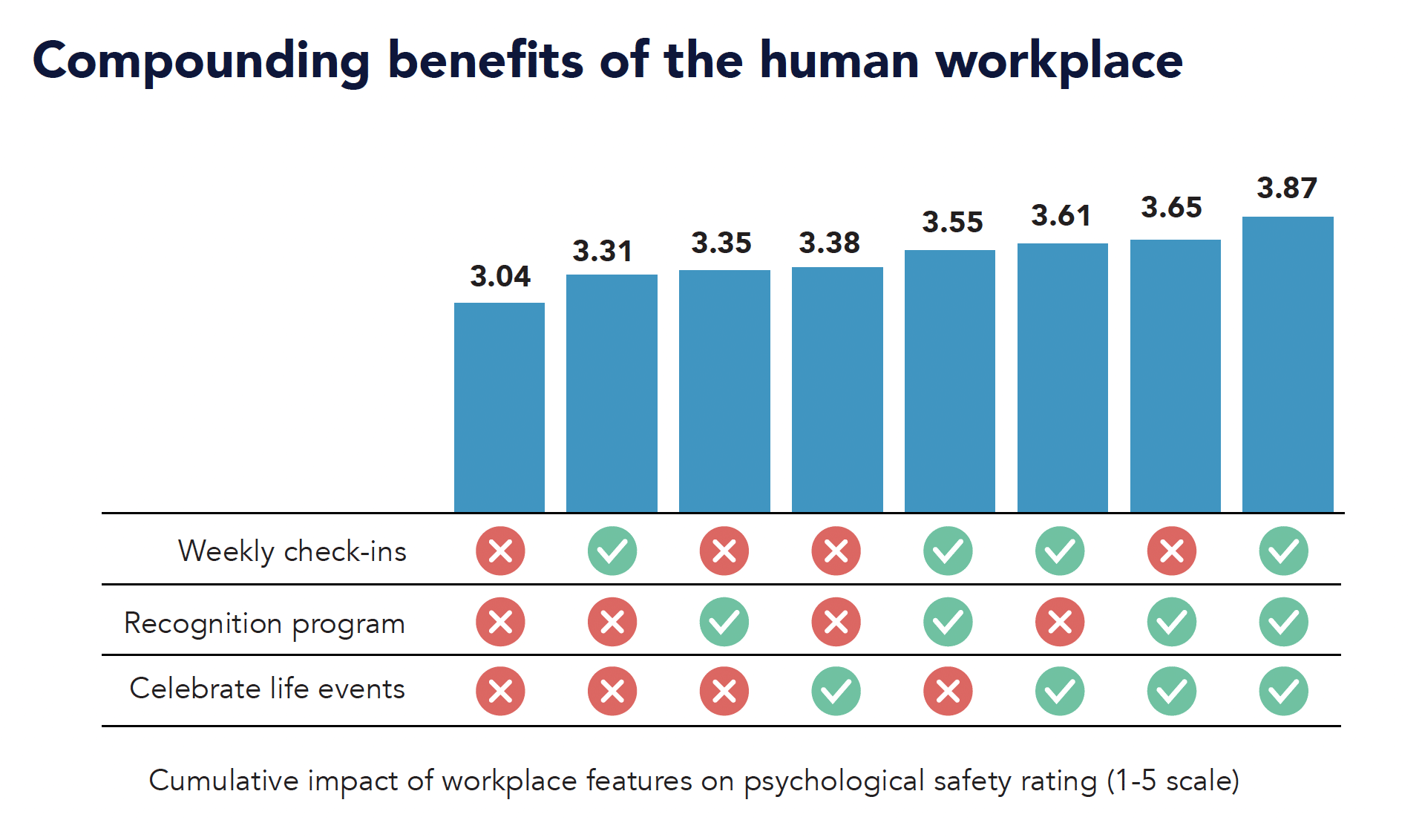Introducing the Evolution of Work Report: The Value of an Employee-First Culture

The last three years have accelerated the changes of work greatly, pushing organizations into the next evolution of work, whether they like it or not.
And as if that weren’t enough change, we are now faced with economic uncertaintyOpens in a new tab and tightening budgets, heightening the stress of many.
So, how are employers – and their employees – faring? What do they need to thrive now? How have the changes we’ve seen impacted different groups of workers? Which employees are benefitting from them, and which are being left behind?
To thrive in the ever-evolving future of work, business leaders need to rethink the employee experience.
No longer is a one-size-fits-all approach to the employee experience good enough.
Organizations must create a culture that considers the unique experiences and needs of every employee.
It is that scene in which we set the stage for our latest research report. This report, conducted by the WHiQ team, looks to reveal not just the state of the workplace today, but also what it means for different workers, and what employers need to do to best support their employees tomorrow. This survey sampled 4,100 full-time employees in the United States, United Kingdom, Ireland, and Canada. This is the 15th iteration of our white paper research and our most diverse population sampled so far.
📥 Download our exclusive report, The Evolution of Work: The Value of an Employee-First Culture.
Check out the full report to uncover invaluable insights into what employees need and how to get there. Or continue reading for some of the top takeaways from the survey.
The state of the workplace

The workplace so many of us have become accustomed to today would have been unimaginable four years ago. Before 2020, we wouldn’t have considered asking employees their “way of working;” today, it’s where we start our analysis.
So, what is the current state of the workplace?
- In terms of ways of working, 49.1% of the sample work on-site, 40.2% work hybrid, and 10.7% work remotely.
- Remote workers are the most satisfied with their working arrangement (87%), followed by hybrid (67%), and on-site workers (60%). Nearly one-fourth of on-site workers reported their work arrangement is not their preference.
- 37% of employees are looking for a new job or are planning to in the next 12 months. Across all countries, the top reason for this was “my salary is too low,” followed by “I want more flexibility and work-life balance.”
- Caretakers find themselves in an acutely stressful position. They are more likely to be looking for a job than non-caretakers. They are also more likely to fear losing their job than non-caretakers.
- 18% of respondents are worried about losing their current job. Fear of losing a job is higher among employees who have gone through a merger in the last 12 months (35%), among LGBTQIA+ employees (26%), among workers in the UK (23%), and among employees at the beginning stages of their career (23%).
No matter where an organizations' employees fall among this sample, there are some things we can say for certain. Employees are feeling unseen, unappreciated, and underpaid. And if left unmitigated, the rate of employees searching for a job is sure to increase.
Organizational leaders should not take this lightly. As we have seen, the workplace can change in an instant, and organizations must be prepared.
But how can they prepare for the unknown?
The Human Workplace

Without a crystal ball, there’s no telling what changes the workforce will face in the coming months and years.
Luckily, our research determined certain aspects of a positive employee experience that are common among satisfied and engaged employees, regardless of differences in age, race, country, and industry. Even better, these elements are easy to adapt to fit the distinct needs of all employees.
Employees should be recognized for their work, celebrated for who they are, and be given chances to cultivate their skills and speak their mind.
To translate, the Human Workplace is comprised of three pillars: Employee Recognition, Life Events, and Check-ins. By themselves, each of these factors move the needle toward a more positive employee experience.
🌟Together, they transform it.🌟

The chart above shows the average psychological safety scores for employees at different workplaces. Psychological safety, the metric being measured in this chart, is the belief that you won’t be punished or humiliated for taking risks, asking questions, making mistakes, or being your authentic self in the workplace.
The employee experience varies widely for employees across industries, countries, and career stages. Yet, we consistently see scores increase when employees check in with their managers, celebrate milestones with one another, and are recognized for their unique skills and contributions.
Employees working at Human Workplaces boast the highest psychological safety scores of our entire survey because they know their thoughts and ideas matter. They are not just cogs in the machine. And unlike machines, employees perform better when they feel better.
And the Human Workplace is one of the most effective ways to get to that point.
So, if you’re ready to shape your organization for the next evolution of work, check out the full report to get started.
About the author
Sarah Bloznalis
Sarah Bloznalis is a content marketing specialist at Workhuman from Dorchester, Mass.